We may be compensated if you purchase through links on our website. Our team is committed to delivering honest, objective, and independent reviews on home products and services.
Linoleum tile flooring is a stylish and comfortable alternative to ceramic, wood, or vinyl. Made from natural materials like linseed oil, sawdust, and cork, these tiles are colorful, cushiony underfoot, and hypoallergenic. Best of all, they click together to form a floating floor without the need for adhesives. This Old House senior technical editor Mark Powers demonstrates the process of installing an eye-catching linoleum tile floor.
Preparing to Install Linoleum Tile Floor
Start by mapping out your pattern using colored pencils and graph paper. Each square on the paper should represent one square foot of the room. Tally the squares for each color and order an extra 10% to account for cuts and potential mistakes. Spend time on this step to minimize waste and confirm that you have enough tiles to complete the pattern.
Acclimating the Tiles
Store the boxes of tiles flat and unopened in the installation room for two to three days. This process allows the tiles to adjust to the room’s temperature and humidity, reducing the risk of expansion or contraction after installation. Proper acclimation prevents future issues such as gaps or buckling.
Gathering Tools and Materials
Gather the necessary tools and materials before getting started:
- Caulk gun
- Combination square
- Foam underlayment
- Hammer
- Jigsaw
- Pliers
- Spacer blocks (3/8-inch)
- Straight edge
- Tape measure
- Tiles
- Utility knife
- Vinyl adhesive caulk
The tiles Powers is installing in the video are Forbo Marmoleum Click 12-inch Square Tiles in Lime and Barbados from Green Building Supply. They cost from $6.29 per square foot.
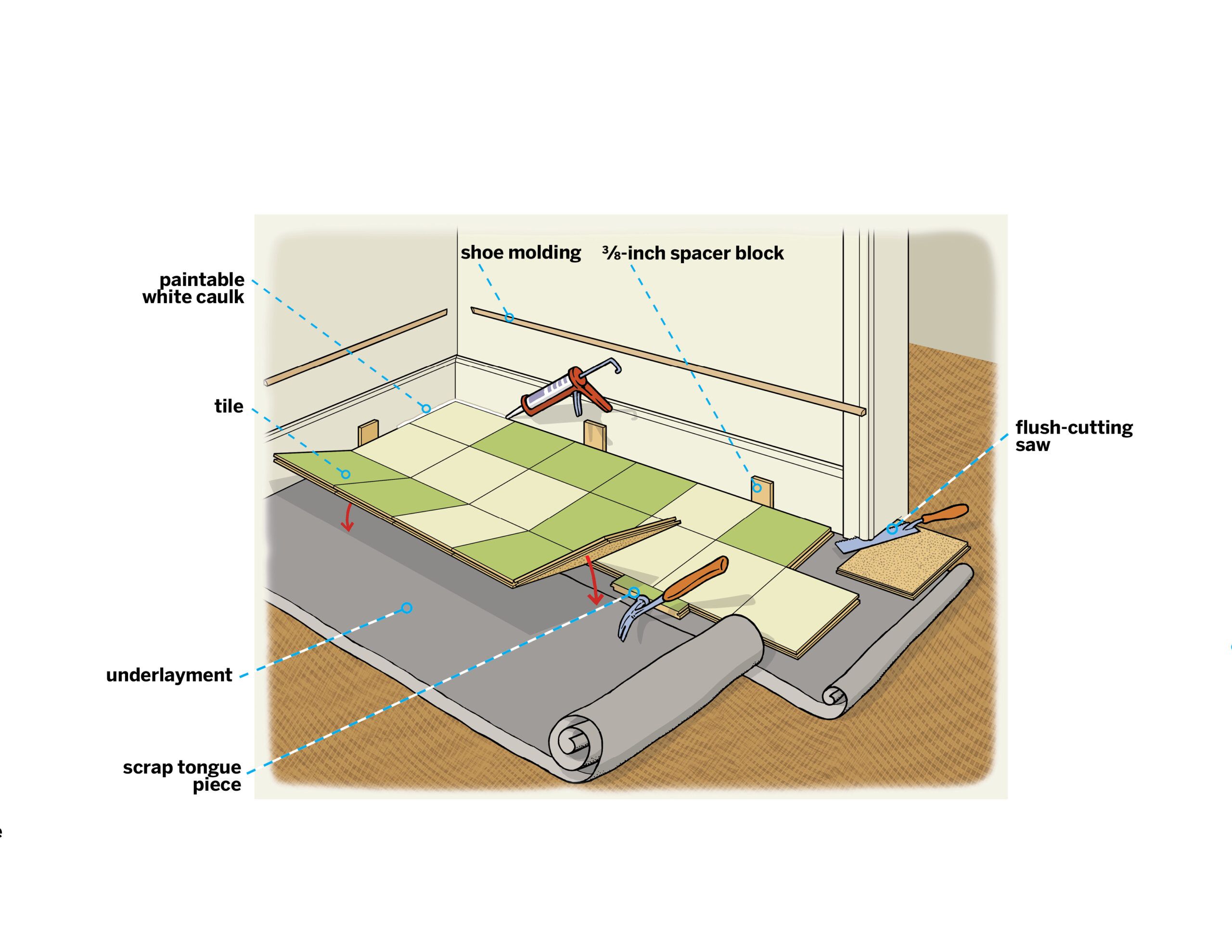
Preparing the Subfloor for Linoleum
Before laying down the underlayment, inspect the subfloor thoroughly. It needs to be clean, dry, and level before you get started. Sand down or fill in any irregularities, such as bumps or dips, to create a smooth surface.
Installing Underlayment
Cover the entire subfloor with foam underlayment. Join the sections along the adhesive strip and trim them to fit using a utility knife. This layer provides cushioning and helps smooth out minor imperfections in the subfloor. It also contributes to the softness and comfort of your new floor.
Trimming Door Casings
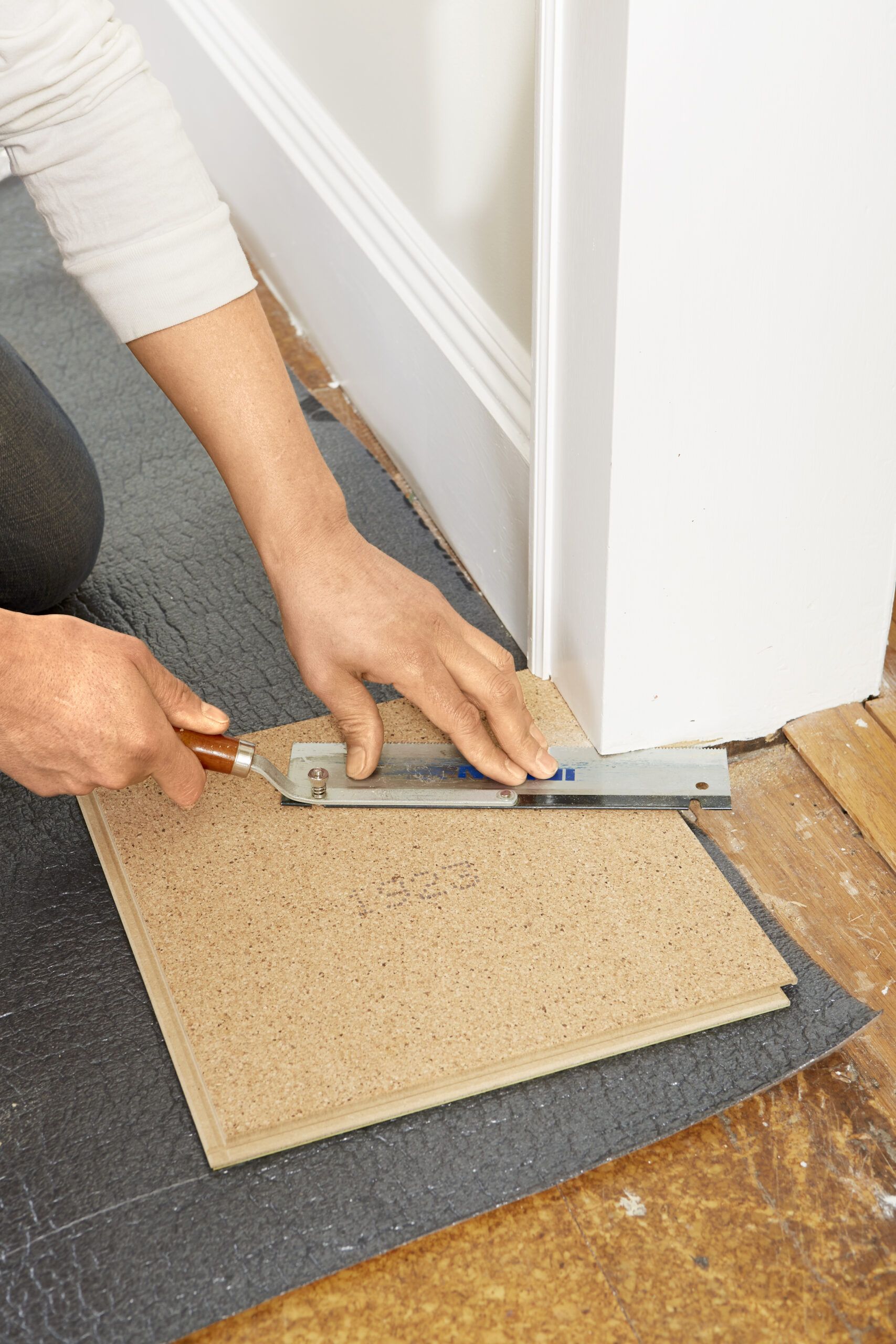
Use a flush-cutting saw to trim any door casings, allowing the tiles to slip underneath. To gauge the right height for the cut, place a section of underlayment and an upside-down tile (to prevent scratches) next to the casing. This will ensure the tiles fit snugly under the casing for a clean, professional look.
Installing the Linoleum Tiles
With the subfloor prepared, you’re ready to begin laying the tiles.
Dry-Fitting the Tiles
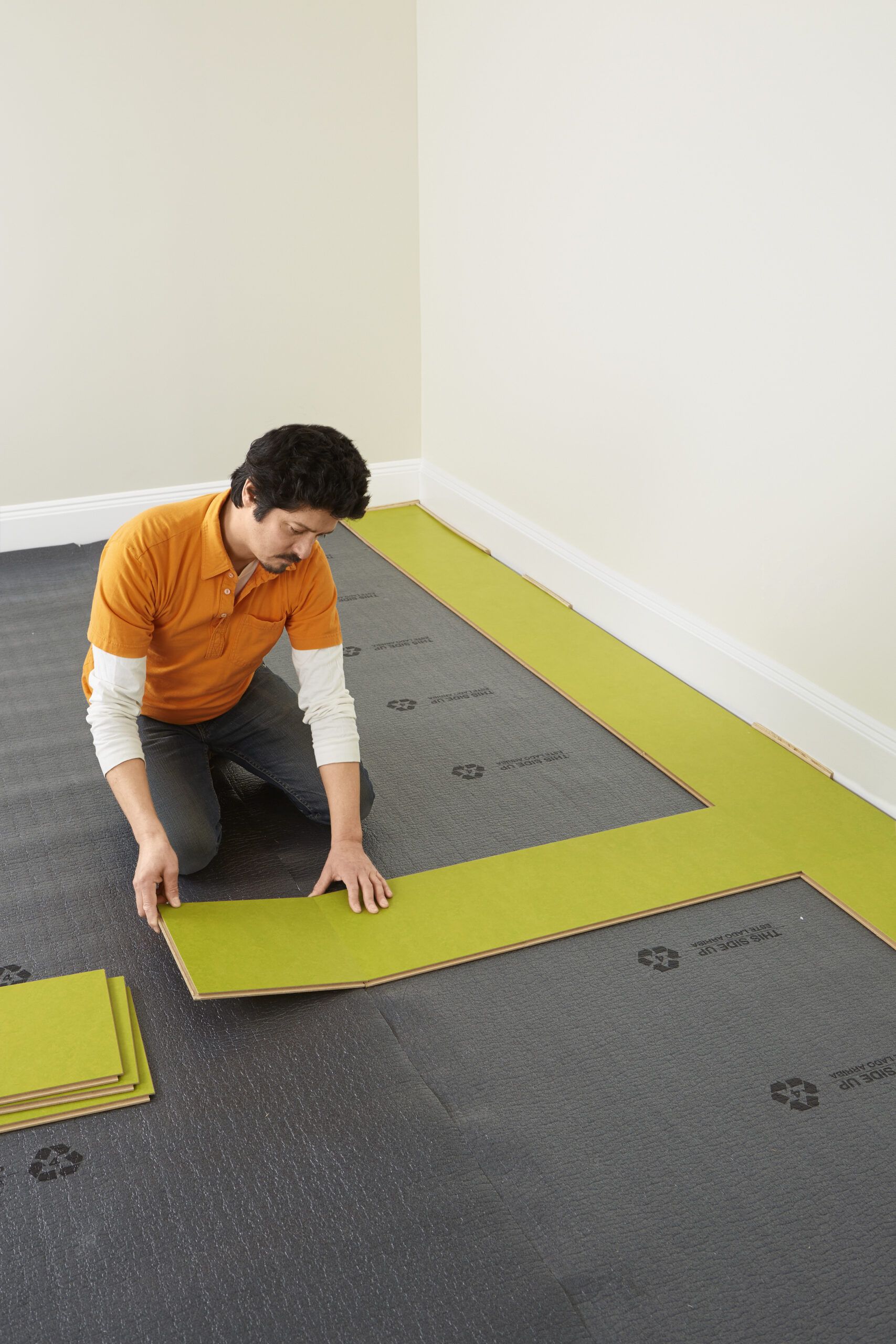
Place 3/8-inch spacer blocks along the baseboard to maintain an expansion gap. Orient the first tile with its tongue edges facing the corner and snug it against the spacers. Click together two perpendicular rows of tiles to determine the size of fractional tiles needed at the edges. Keep the alignment as tight as possible to ensure a seamless appearance.
Trimming Edge Tiles
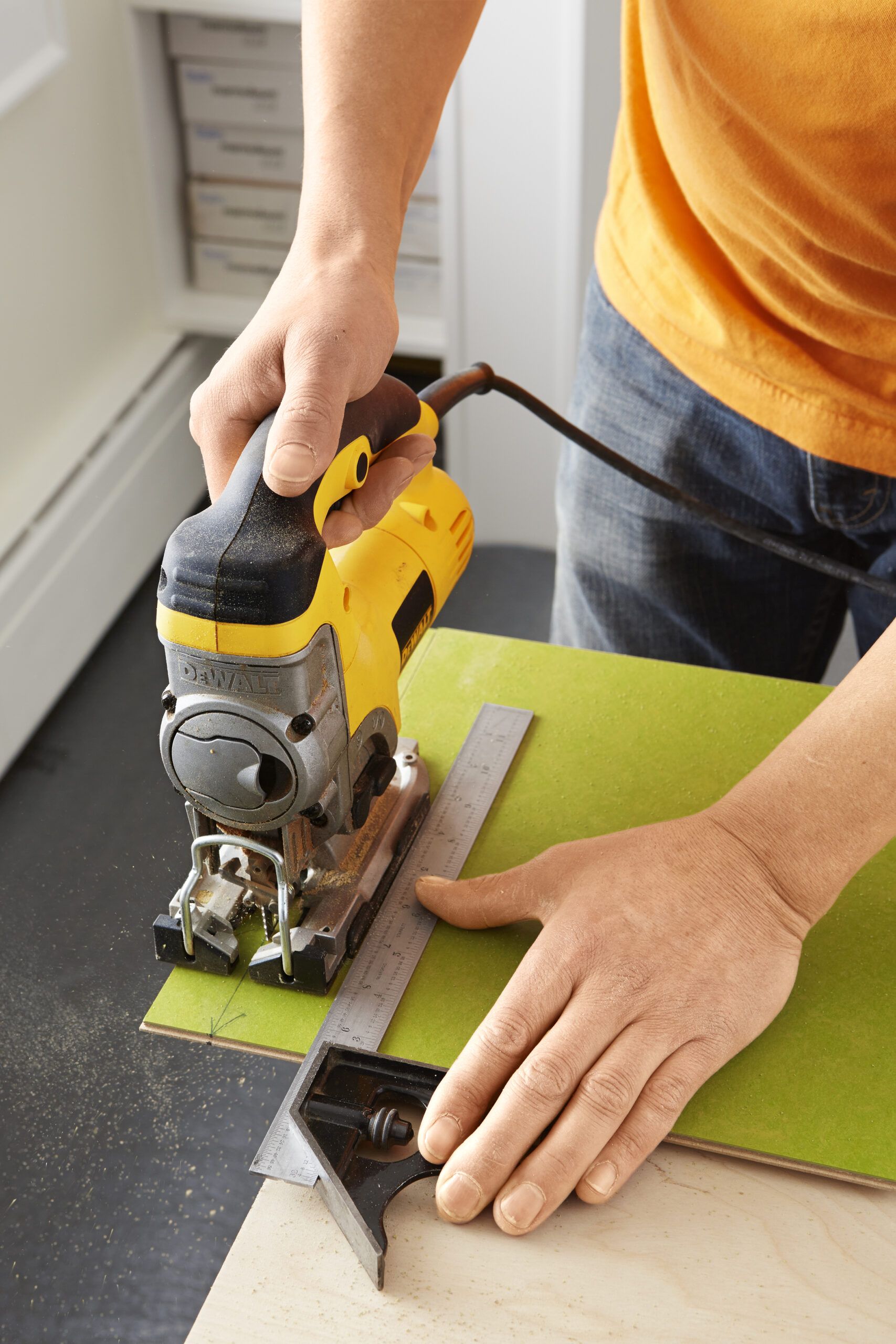
For a balanced look, you may need to trim tiles in the first and last courses. Measure the gap between the last full tile and the baseboard in each direction. Subtract this measurement from 12 inches and divide by 2. Trim this amount off the tiles in the first and last courses using a jigsaw.
Remember to remove the tongue edges when trimming tiles for the first course. This ensures they fit flush against the wall to maintain the overall balance and pattern.
Orienting the First Tile
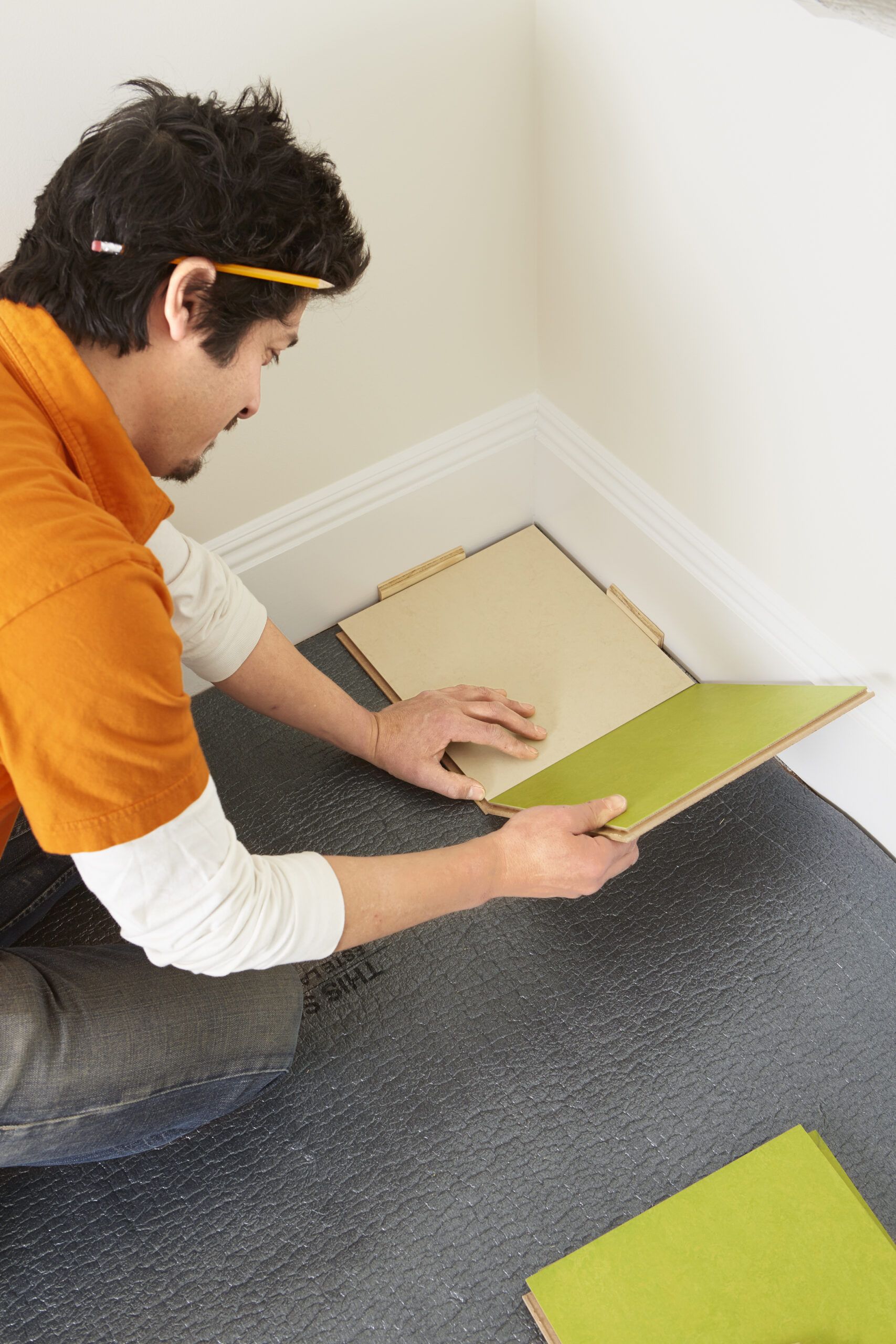
Starting at the left-hand side of the longest wall, place the first tile with its tongue edges toward the corner against the spacers. This leaves two groove edges exposed: one for the neighboring tile and one for the second course.
Working left to right, angle the left-hand tongue of the second tile into the right-hand groove of the first. Align their top and bottom edges, then press the tile flat. Continue laying tiles until you meet a threshold, as we did, or the right-hand wall, in which case you should trim-fit the last tile and skip to laying the second row.
Working Around Thresholds

For a threshold, connect the tile that straddles the threshold to its trimmed neighbor with their top edges aligned. Hold a combination square against the jamb and mark the width of the notch.
Shift the tile to align the bottom edges, and mark the depth of the notch. Use the square to connect the perpendicular marks, and cut the notch with a jigsaw. Pull the first course from the wall to connect the notched tile, as shown, and slip it in place under the flush-cut casings.
Tip: If you want to avoid using shoe molding to cover the expansion gap, remove the baseboard before starting and reinstall it as the final step.
Laying Subsequent Rows
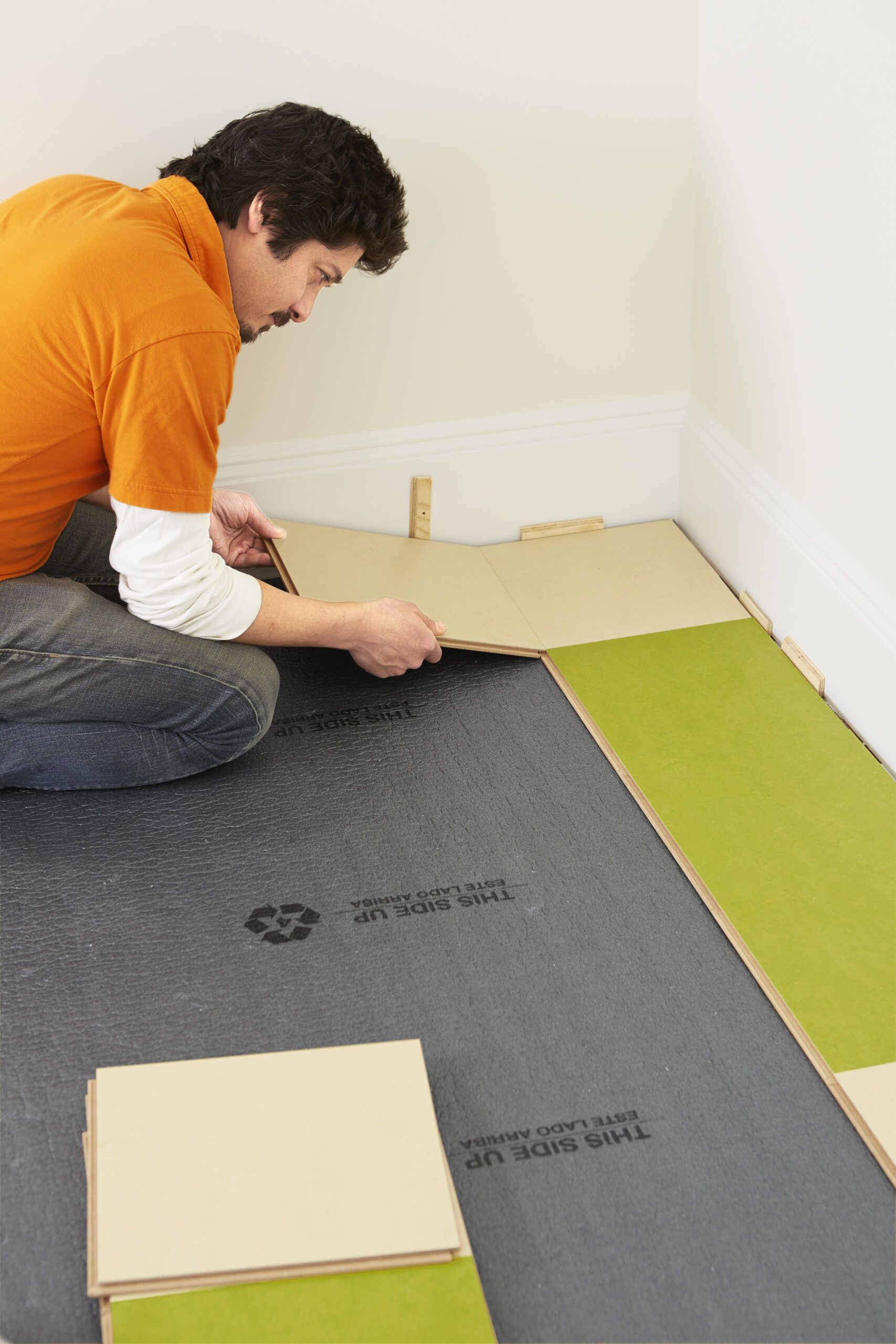
Angle the first tile of the second row into the groove of the first course. Connect the next tile to its neighbor’s groove while maintaining the angle. Drop both tiles into place, ensuring they click securely into the first course.
Continuing the Pattern
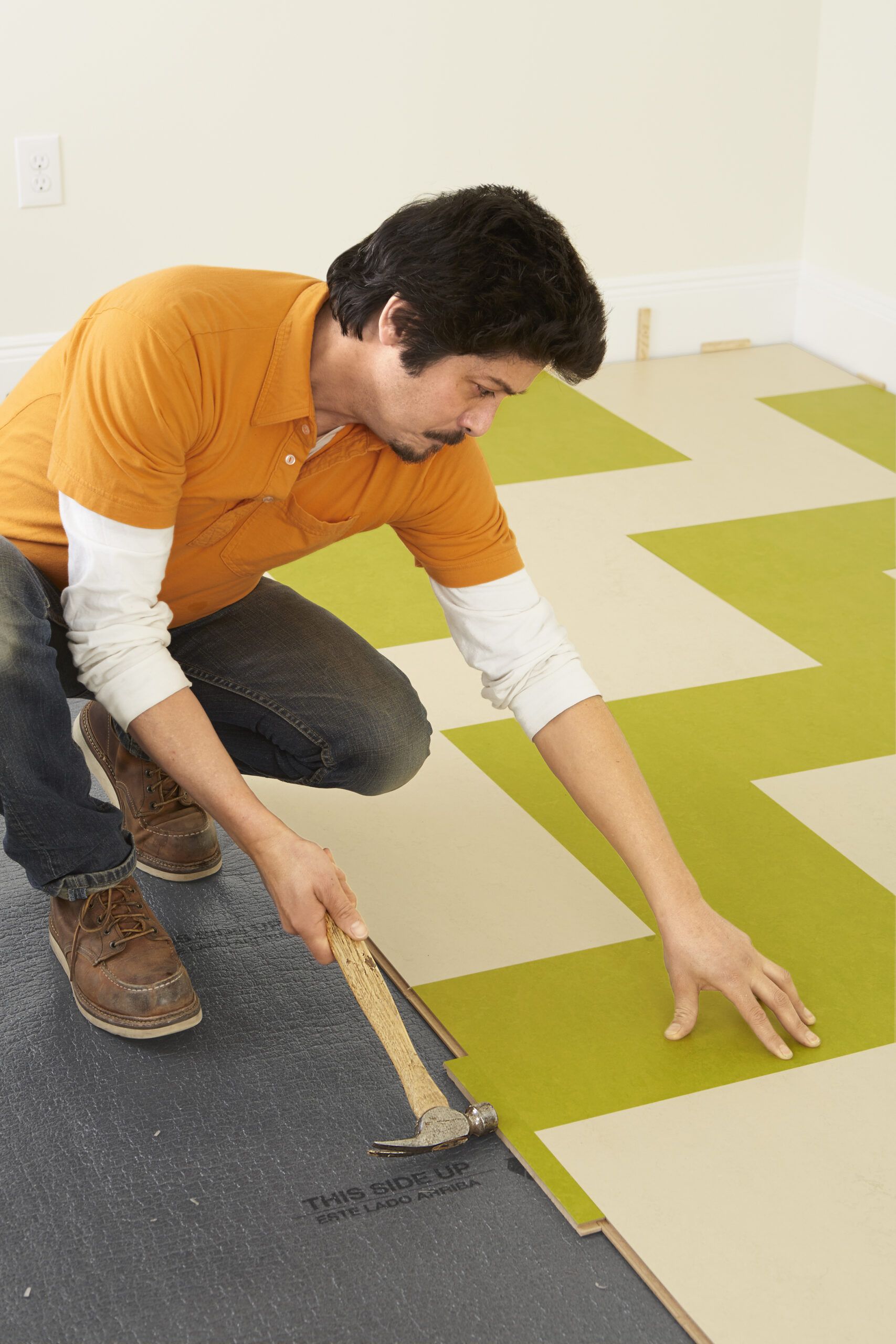
Continue the installation according to your graph-paper pattern. Ours alternates rows that repeat three tiles of one color and then one of the other. For each course, check that the exposed groove-side edges are flush. Where they’re not, snap a scrap tongue piece into the grooves of adjacent tiles and use a hammer, as shown, to lightly tap the protruding edge back in line. Inspect the intersections where four tiles meet to ensure that all edges are aligned and that the seams aren’t visible.
Navigating Corners and Edges
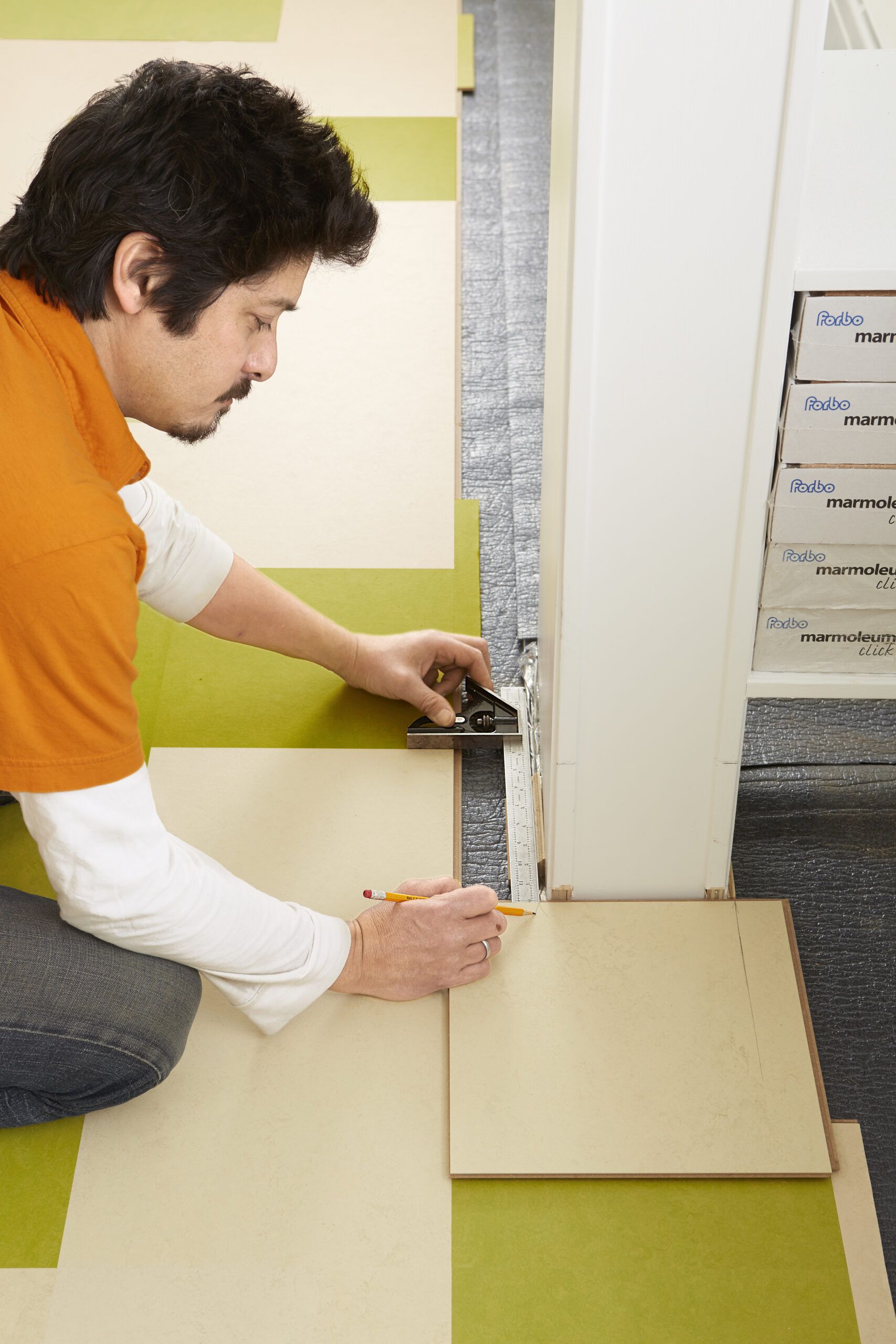
Corners and edges often pose a challenge. To handle these areas, use a combination square to measure the precise cuts needed. Mark the measurements on the tile with a pencil. Use the jigsaw to make the necessary cuts, ensuring they are neat and even.
Working Around Flooring Obstacles
Navigating around obstacles like columns or thresholds requires some additional techniques.
Removing Lips From Grooves
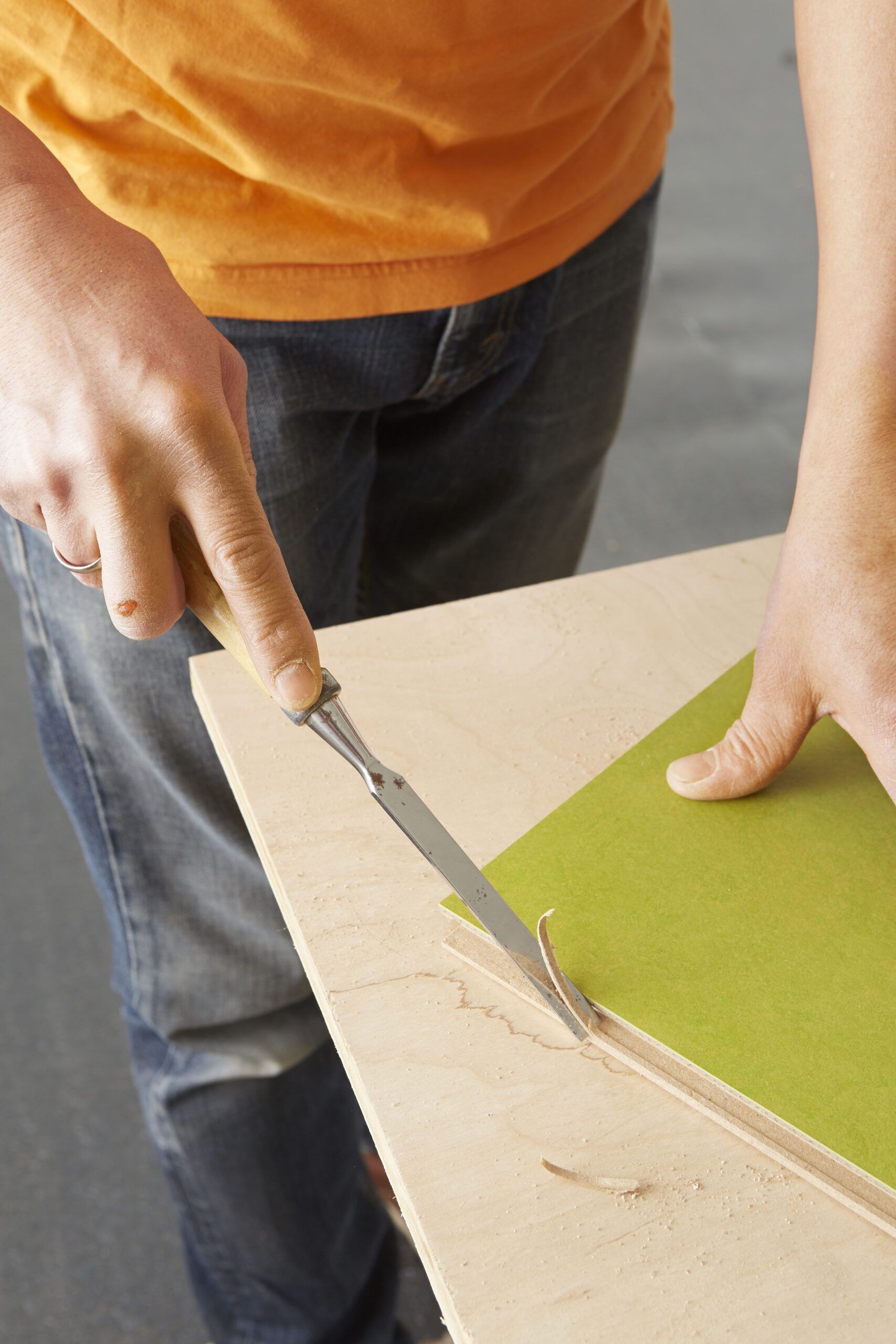
In areas where notched tiles can’t be angled into place, you’ll need to adjust the receiving tile. Use a chisel to shave down the lip blocking the groove on the receiving tile. This adjustment allows the notched tile to slide in seamlessly.
Notching Tiles
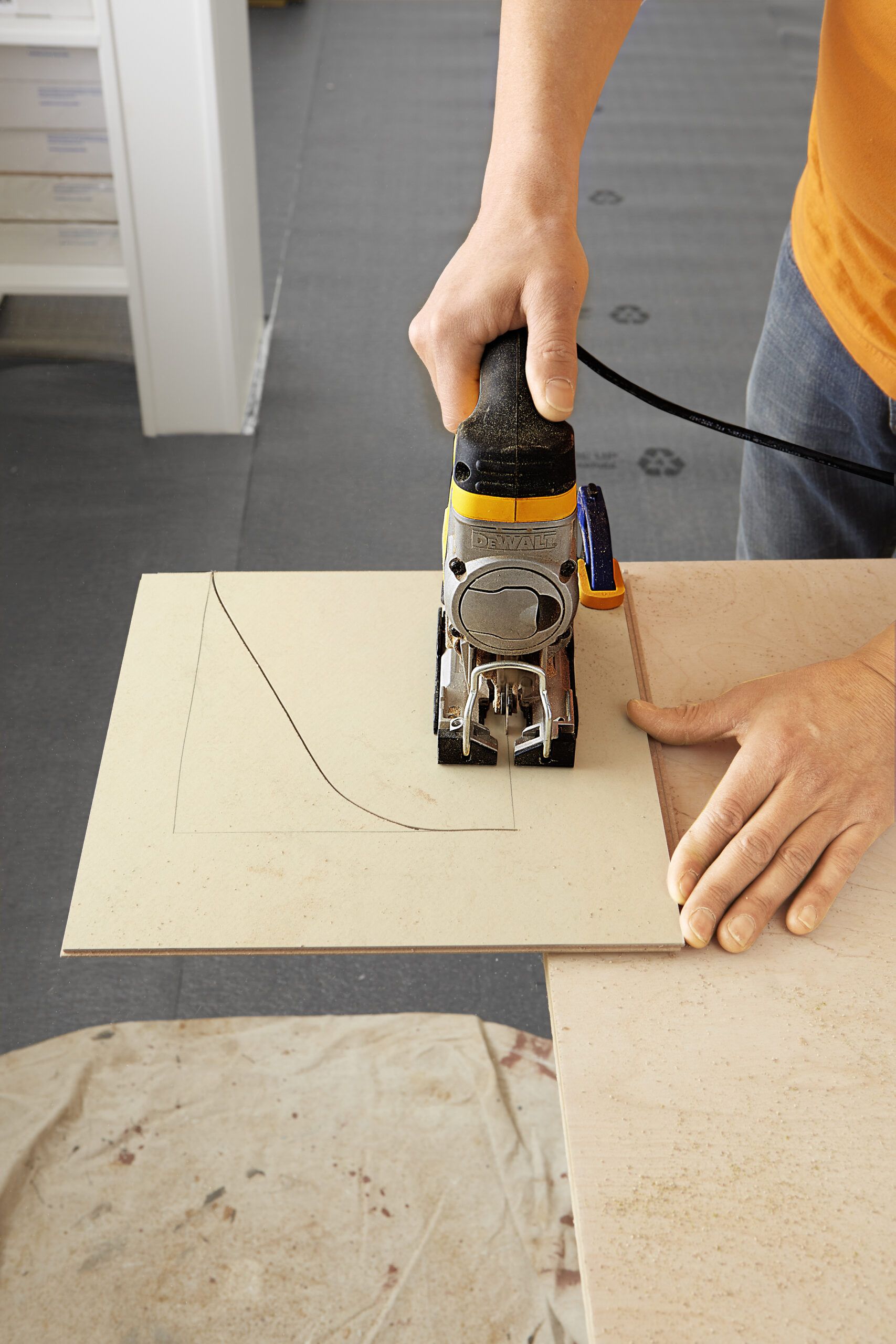
To fit tiles around obstacles, mark the required notch using a combination square. Clamp the tile extending off your work surface. Since a jigsaw can’t make 90-degree turns, start cutting on a curved path until you meet the diagonal corner on a perpendicular. Cut along the other line, as shown, to connect with the cut at the corner. Now cut the other two sides of the notch.
Installing Notched Tiles
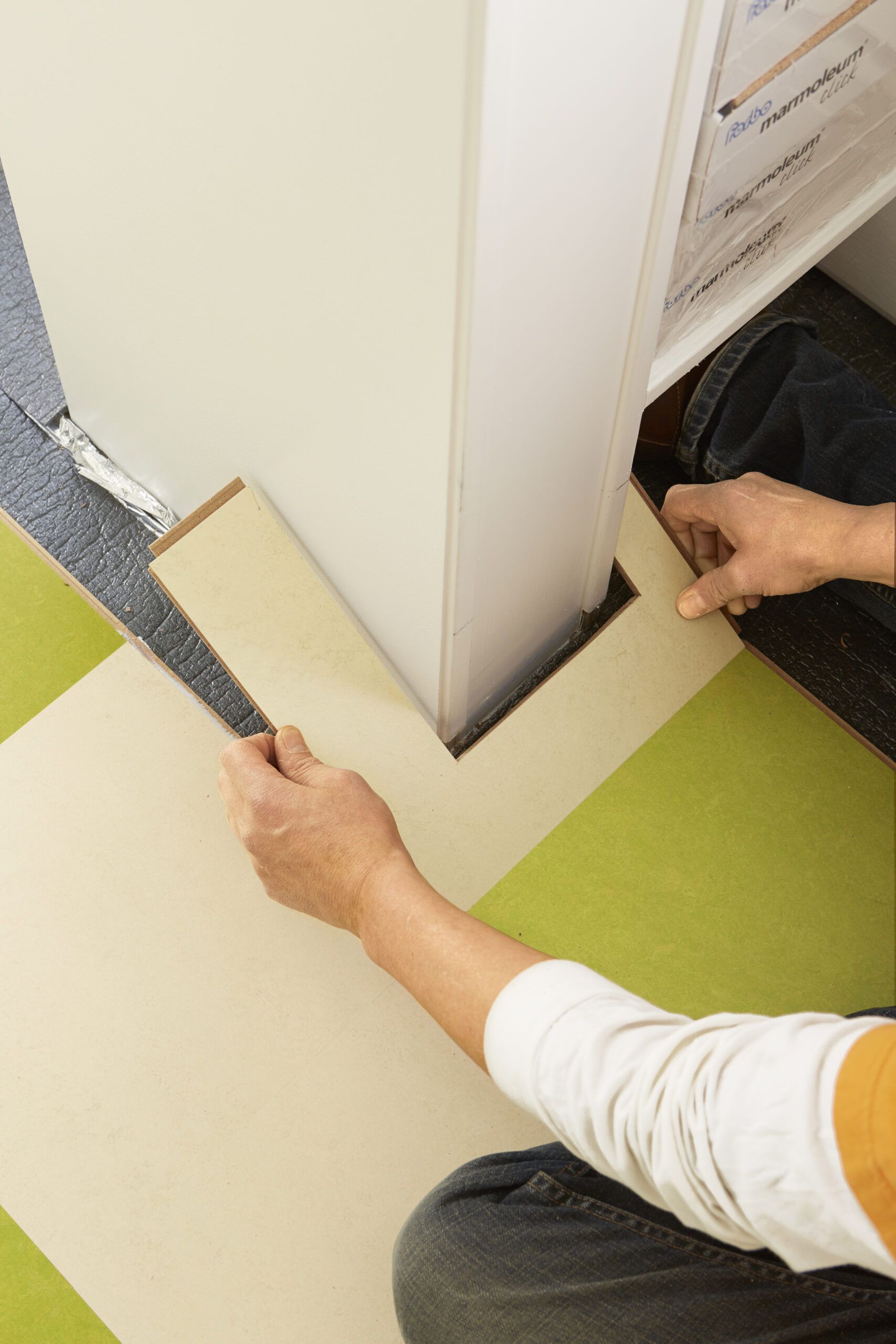
Since notched tiles can’t be angled into place, use a chisel to remove the lip blocking the groove on the receiving tile. Run a bead of translucent vinyl adhesive caulk on the groove, angle the notched tile into its neighbor, as shown, and then lay it flat around the column. Press the caulked edges together and wipe up any excess adhesive.
Linoleum Tile Finishing Touches
Completing your linoleum tile floor installation involves a few final steps to ensure a polished look.
Dealing With Tight Spaces
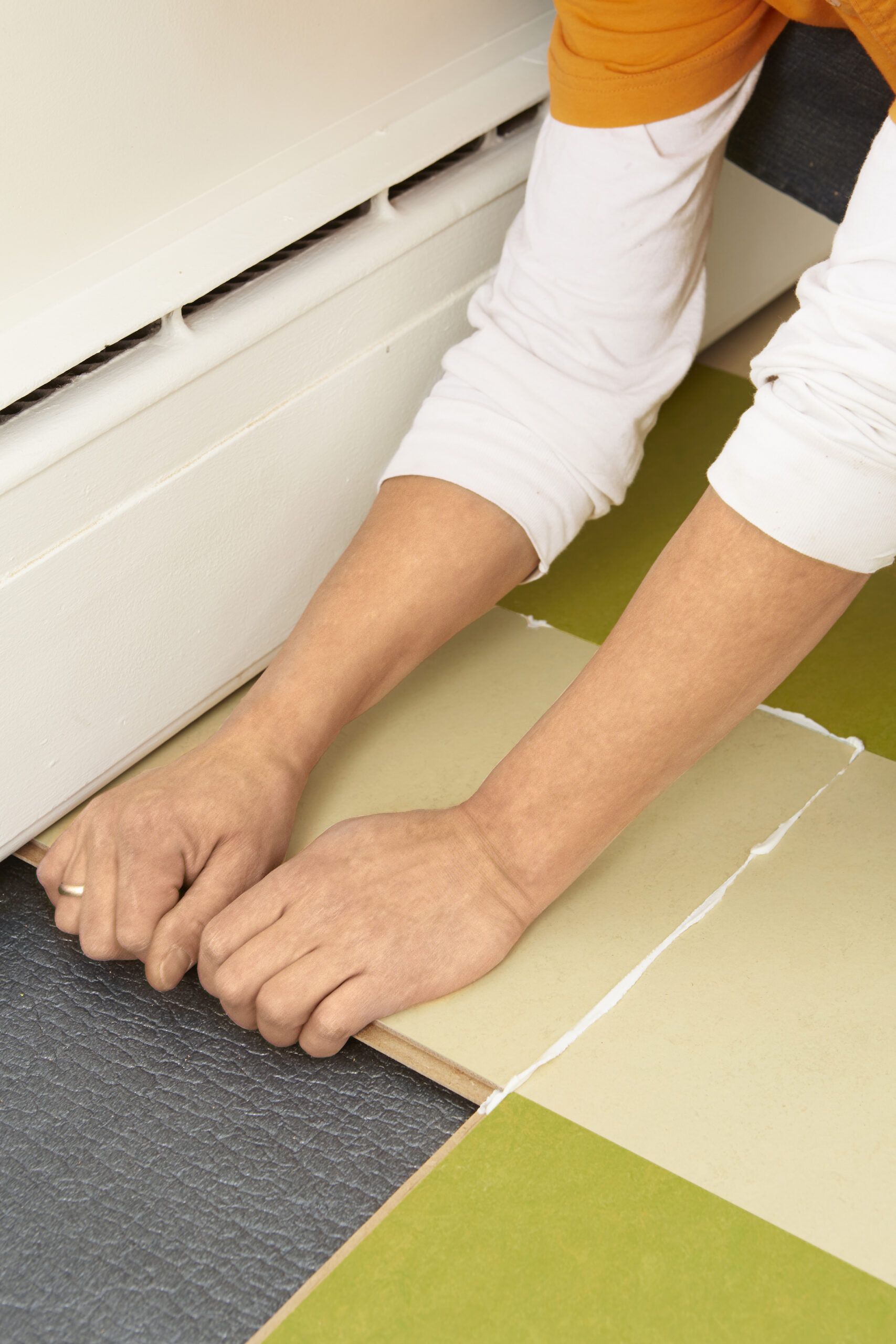
For areas where tiles can’t be angled into place, such as under baseboard heaters, use a chisel to shave down the groove on the penultimate course and the right-hand edges of the final course tiles. Apply adhesive caulk to the receiving grooves. Slip the final tiles into place without angling them. If necessary, first trim the tiles to fit with a jigsaw.
Sealing the Perimeter
For each tile in the final course, run a bead of adhesive caulk on the grooves receiving the tile. Snug each tile into place, as shown, then use a damp rag to quickly wipe away any adhesive that squeezes out at the joints. Remove the spacers and run a thick bead of paintable white caulk around the perimeter of the room and any obstacles. Install shoe molding to conceal the gap.
Tools
 Tape measure
Tape measure Utility knife
Utility knife colored pencils
colored pencils Flush cut saw
Flush cut saw Jigsaw
Jigsaw spacer blocks – 3/8-inch
spacer blocks – 3/8-inch Miter saw
Miter saw Clamps
Clamps Hammer
Hammer Combination square
Combination square chisel – 1/2-in.
chisel – 1/2-in. Caulk gun
Caulk gun Pneumatic nailer
Pneumatic nailer













